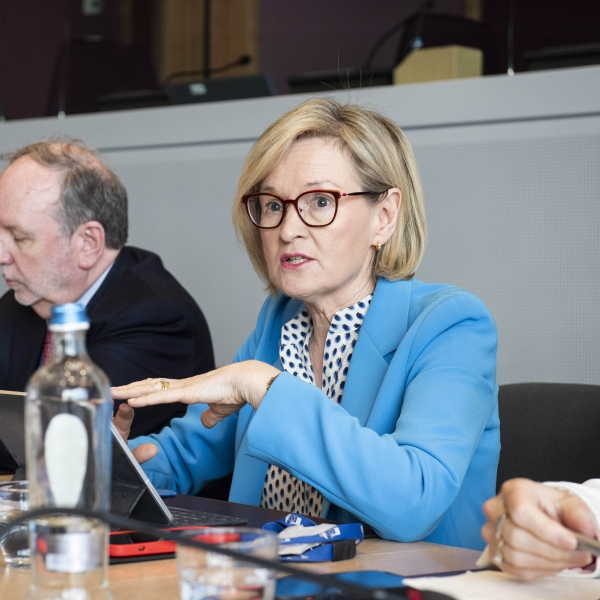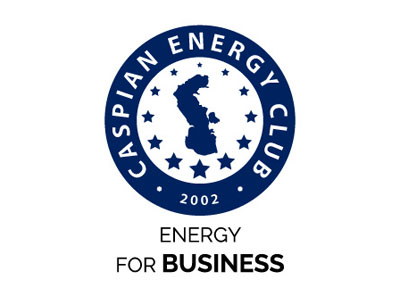Caspian Energy (CE): EU plans to become climate-neutral by 2050. Will it be public or private investments playing a major role in achieving this goal during the transition period? What measures have been taken or conditions were set up to mobilize funding to support the energy transition?
Mairead McGuinness, European Commissioner for Financial Stability, Financial Services and the Capital Markets Union: The EU will need additional investments of over EUR 620 billion annually to meet the objectives of the Green Deal and RepowerEU, along with investments of EUR 92 billion until 2030 to meet the objectives of the Net Zero Industrial Act. Public funding will play a role – but the scale of investment required is beyond the capacity of the public sector acting alone. That’s why we have sustainable finance: to channel private financial flows into economic activities that support the transition to sustainability.
Private interest in sustainable investment has grown considerably in recent years but requires rules and guidelines for sustainable finance that are clear, consistent, and robust. To that end, the EU has put in place three pillars:
- First, the EU Taxonomy: this is a detailed glossary on sustainable economic activities. It aims to support investors to finance transition and sustainable projects that substantially improve the environmental performance of activities across all key economic sectors. By clearly defining what is aligned with EU environmental goals, the EU Taxonomy seeks to encourage companies to launch new projects, or upgrade existing ones, to meet these criteria. Alongside the Taxonomy, an important step towards fighting greenwashing and other types of misinformation was the adoption in June of a proposal on the transparency and integrity of ESG rating activities.
- Second, disclosures: Through the Sustainable Finance Disclosure Regulation and the Corporate Sustainability Reporting Directive, the EU has also put in place a comprehensive disclosure regime impacting the whole financial sector to increase transparency about environmental, social and governance (ESG) impacts, risks, and opportunities and following a double materiality approach. The forthcoming European Sustainability Reporting Standards will contribute to completing this framework by enabling companies to communicate sustainability information in a standardised and proportionate manner, and accordingly facilitate their access to sustainable finance.
- Third, a set of investment tools: such as the EU Green Bond Standards and the EU Climate Benchmarks which aim to support financial market participants in their efforts to align their investment strategies with the EU’s climate and environmental goals.
We are now focusing on completing this framework, while at the same time ensuring it works effectively to help the real economy in the transition. Our objective is to keep environmental ambition high and related burdens low, ensuring the long-term competitiveness of our companies.
On 13 June, we presented a package that strengthens these foundations and make sure everything works well in practice.
- As part of this package, we presented an overview of recent measures the Commission has taken to address key implementation issues reported by stakeholders. These measures aim to ensure rules are as easy to implement as possible, clear, and consistent, while minimising administrative burdens as much as possible. The Commission will continue its work on improving the usability of the taxonomy and the wider sustainable finance framework, with the support of the European Supervisory Authorities and the Platform on Sustainable Finance, and based on continuing stakeholder engagement.
- We have clarified that sustainable finance is not only about companies that are already green. In particular, we have provided guidance on how the EU taxonomy, EU Green Bond Standard, the Benchmark Regulation and our other tools can be used voluntarily by companies at different starting points to attract capital for financing projects for their transition and in ways that ensure a trusting environment for investors and the credibility of transition investment opportunities.
CE: Dear Madam Commissioner, we would like to hear from you more about the advantages of the MiCA regulation, about the way it will protect consumers and safeguard financial stability?
Mairead McGuinness: MiCA is about providing market integrity, protecting consumers and investors and ensuring financial stability in crypto-asset markets. The EU is the first major jurisdiction in the world with thorough, bespoke rules covering all crypto-assets (including stablecoins) that don’t qualify elsewhere under existing financial services legislation. We’re moving these previously unregulated crypto-assets into the regulated space
For example, it would address risks of market manipulation (and subsequent volatility), theft of crypto-assets stemming from providers having inadequate IT security in place. Many crypto-assets are speculative instruments and still reserved for investors who are prepared to make these risky investments. MiCA would ensure that this is clear for all potential retail investors in advance of any possible investment.
There would also be the possibility of product intervention in cases where a crypto-asset or a crypto-asset activity gives rise to significant investor protection concerns or poses a significant threat to markets.
CE: To what extent has the green financing strategy been developed, and how do you assess the implementation progress of the European Green Deal?
Mairead McGuinness: The European Green Deal sets very ambitious goals, which would eventually lead us to climate neutrality by 2050. We know that public money won’t be enough and we have been working hard to ensure the financial system and corporates play their role in the transition.
We started with our first sustainable finance action plan in 2018 and in just five years, we’ve built a strong rulebook that supports the flow of private finance towards sustainable investments.
The good news is that the EU sustainable finance framework is increasingly being used by the market, facilitating private finance for green and transition investments. For instance, the first indications of corporate taxonomy reporting from this year are encouraging, with companies across key sectors making good use of the taxonomy as part of their sustainability efforts. The first reporting data we are getting, although not yet complete, confirms that the EU Taxonomy is a standard that companies can usefully employ on the ground to advance their transition. 63% of the STOXX Europe 600 companies reported their taxonomy-alignment figures already, and 30% of these companies reported non-zero alignment. But what is even more encouraging is that these companies reporting non-zero figures have on average 23% taxonomy-aligned capital expenditure, 24% taxonomy-aligned operational expenditure and 17% taxonomy-aligned revenues.
In addition, recent figures on the EU Climate Benchmarks show that the Paris Aligned Benchmarks (PABs) and Climate Transition Benchmarks (CTBs) have been recognised by major investment institutions, including public institutions and non-EU institutions, as solid tools to help investors tailor their portfolios to follow a decarbonisation pathway. Assets under management of financial products referencing a PAB or CTB benchmark have already reached an estimated EUR 116 billion in 2023.
The benefits from applying the framework will increase with the progressive availability of data. The European Single Access Point – which will offer a one-stop-shop for public financial and sustainability-related information about EU companies – will enable digital and open access to that data.
CE: What are the latest digital technologies introduced in the financial system of the EU?
Mairead McGuinness: Digitalisation is transforming finance. It leads to new ways of producing financial services and products, new ways of consuming them and new types of entities distributing and promoting them. Innovative market participants are deploying new technologies and existing business models are evolving. All this has a direct impact on how we regulate and supervise.
Our Digital Finance Strategy sets out to foster innovation while managing the risks. I would like to mention in particular two technologies which have the potential to transform finance, and which we are taking into account in our regulatory work.
First distributed ledger technologies, or DLT. These technologies are at the heart of crypto assets which have seen many instances of scams and instability, calling for much tighter regulation of the sector, and the EU has responded with the MiCA legislation. But if properly regulated, DLT also has the potential to make capital markets more efficient and make access to them cheaper including for smaller companies. This is highly relevant for our objective to develop the Capital Markets Union in the EU. This year, we launched a pilot DLT, both established financial companies and newcomers are able to experiment with issuing, trading and settling shares or bonds using blockchain technology. I want to encourage financial firms to consider participating and we are awaiting the first projects with great interest.
Second, the financial sector is increasingly using AI. We see it used for detecting fraud, assessing people’s creditworthiness and in assessing risk more generally, in financial advice, when making investment decisions and when executing trades. There has been a renewed interest in AI following the release of generative AI systems like ChatGPT. Generative AI is likely to broaden the uptake of AI generally, including in the financial sector. AI can reshape client experiences, transform the operations of financial institutions, improve risk and fraud management processes and help with regulatory compliance. It can improve accuracy and efficiency in decision-making, it can improve fraud detection and prevention, it can automate customer service and improve risk assessment and management. But if not properly handled, AI also creates risks, for example risks of exclusion. The EU has therefore proposed a broad regulatory framework, the AI Act, which cuts across sectors, and we hope that the European Parliament and the EU Member States will agree on it in inter-institutional negotiations as soon as possible.
Thank you for the interview





